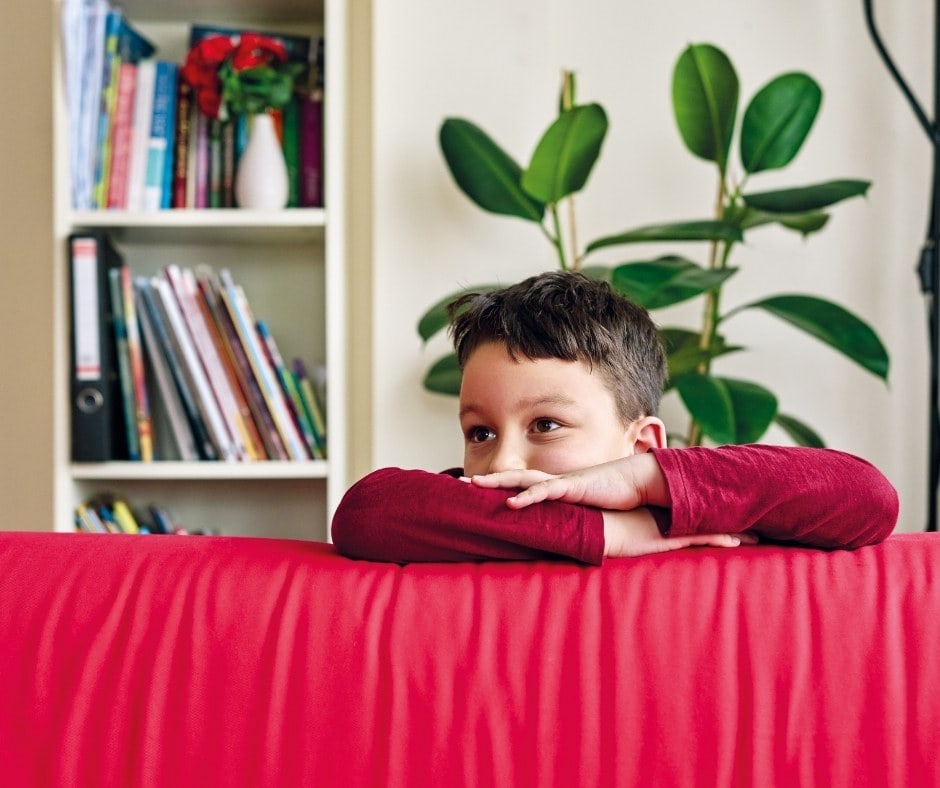We all want to make the world as safe as possible for our children. We monitor who they play with, tell them to look both ways before crossing the street, and make sure they are fastened in tight when we drive them somewhere.
But what about dangers in our homes? Thousands of children are injured every day in household accidents. How can you keep your children safe while in the living room?
We looked into it and put together this article full of tips. By the end of it, you should have a good idea of what you can do to make your living room as safe as you possibly can. We hope you find it valuable.
How to childproof a living room

Childproofing a living room isn’t all that difficult, but it will take a little time. You also don’t need to spend a bunch of money to do it, and in fact, anything you might need might already be lying around the house.
The first thing you’ll want to do starts when you are figuring out how to furnish your living room. A childproofed living room means having furniture that is designed to be safe around children.
We’d recommend that you avoid furniture with glass in it if you can. If it’s necessary, find furniture with shatter-proof glass or consider using a sheet of transparent plastic where the glass would normally go.
Look for couches with as much padding on them as possible, especially where there might be sharp corners of wood or metal. That way, if your children trip and hit their heads on your furniture, the padding will absorb most of the shock.
Make sure that your living room, in general, is in good repair.
Always start with your electrical outlets. While furniture tipping over poses the biggest risk to kids in your living room, most don’t result in serious injury. Electrical shocks are especially concerning.
Are your outlet covers cracked and in need of replacement? Are your unused outlets plugged? How many cords are plugged into the outlets? Too many might create a fire hazard.
As to the cords plugged into them, are they in good repair or is the insulation rubbed down to where bare wire is showing? If those wires are left to stretch across the ground, especially in walking areas, they will pose a trip hazard. Make sure they are as tuck away as possible.
Cords dangling over the side can tempt children to grab them and pull things over the side of a shelf or entertainment center. Tuck them in the back where kids can’t get to them.
Check all the windows to make sure they open and close easily and don’t come crashing down. If there are cords to open and close blinds, make sure those are coiled and out of reach of children.
If your living room is a wood floor with rugs, make sure you tape the rugs down. Loose rugs are easy to turn into trip hazards. They might also move suddenly under the feet of running children and create a falling hazard.
One tip to making your living room safe is one no exhausted parent wants to hear, but make sure your kids clean their toys up. Toys, especially small ones, create trip hazards or just things that cause agony if you step on them.
Finally, take a kid’s-eye tour of your living room. Get on your hands and knees and try to see what a child might see moving through your living room. You might see other trip hazards or risks of easily tipping over furniture.
How to childproof living room furniture
One of the biggest risks to kids in your living room is the furniture itself. Tipovers constitute the largest number of home accidents involving kids, so making your furniture safe is the primary task in making your living room safe.
The job starts when you decide which furniture to put in your living room. Avoid anything with sharp edges or glass. Pick stuff that has lots and lots of padding. Furniture that is stable and stays in one place is better than furniture that can abruptly move.
When your home is furnished, address the risk of your kids tipping it over onto them. This is especially the case with anything tall and top-heavy. If it looks like a kid might be able to pull it over, mount it to the wall with brackets, straps, or floor mounts.
Reduce the temptation for climbing by moving things like candy, television remotes, and toys from on top of furniture. Reduce the temptation to pull things off those by bundling power cords and sliding them behind whatever the television or computer is sitting on.
You’ll want to make sure all of your furniture is well maintained. Most fabric is fastened to frames with staples. If those pull away, it creates a hazard for scratching or cutting. Make sure those are securely fastened to the furniture frame.
Keep all of your furniture connections tightly fastened. Don’t allow nuts and bolts to remain loose. These could create pinch hazards in between sections.
If you place your furniture on carpet, make sure it can’t move around too easily. That will eliminate any risk that it will move suddenly when a child sits on it.
Place couches and chairs with their backs against the wall. A child who climbs atop them might quickly make them top-heavy that they become sudden tip hazards.
Conclusion

You can’t protect your children from all the world’s dangers, including those in your homes. Thousands of children are injured every year in accidents around the home.
But you can reduce the risks posed to your kids in your home by doing some quick and commonsense things. That will turn your living room from a minefield of dangers into a place they can relax, knowing they are safe.
We hope you found this article valuable. If you did, or if you have ideas of your own, we’d love to hear about them in a comment down below. Or, feel free to share this article on your own social media networks. Someone else you know might benefit from this knowledge.

